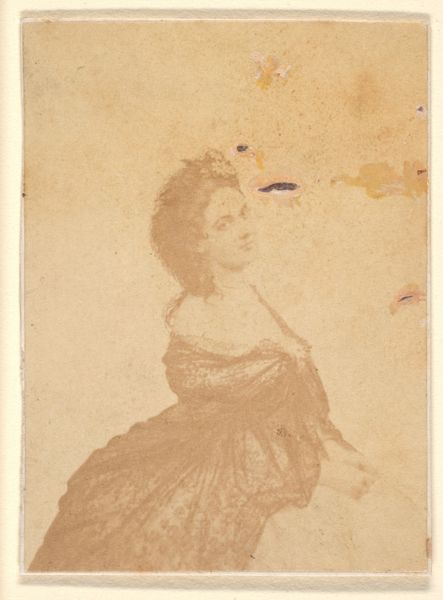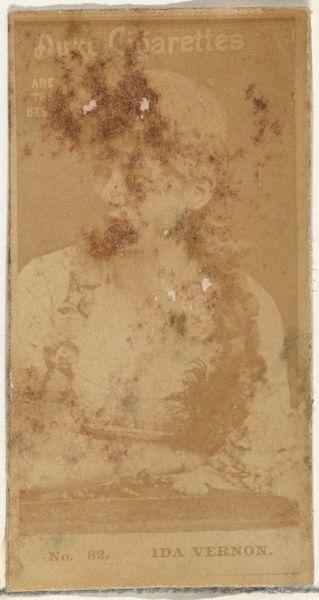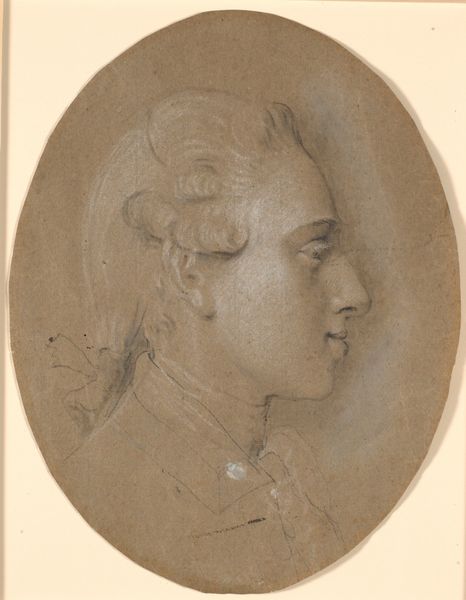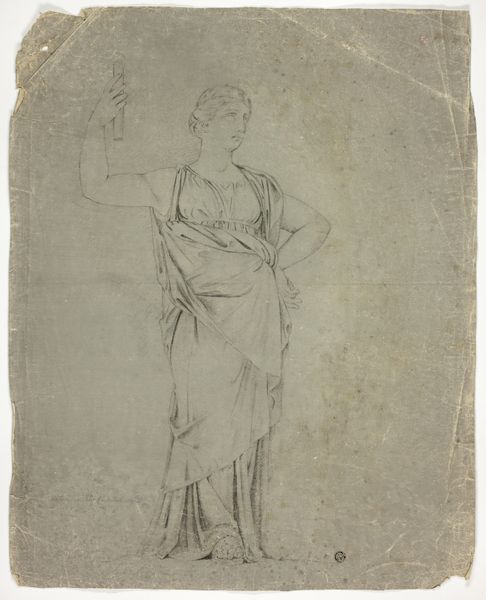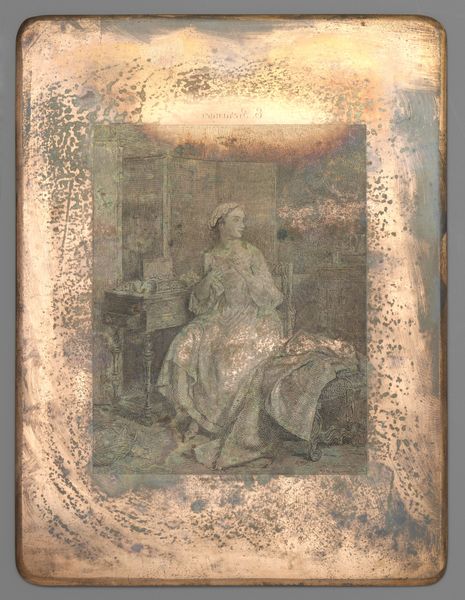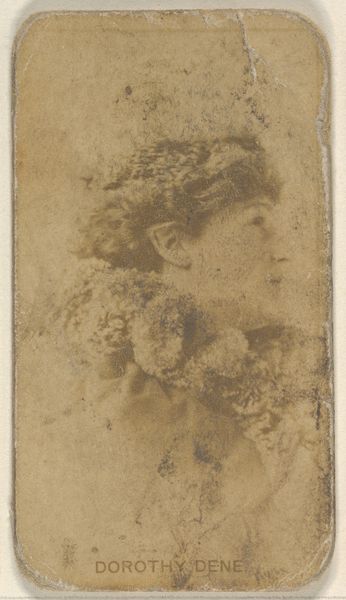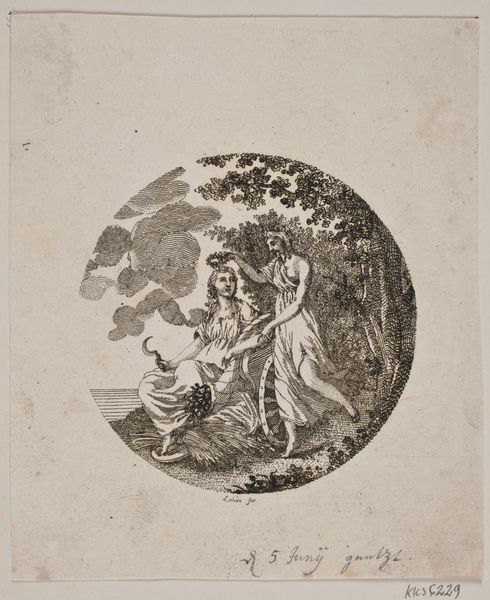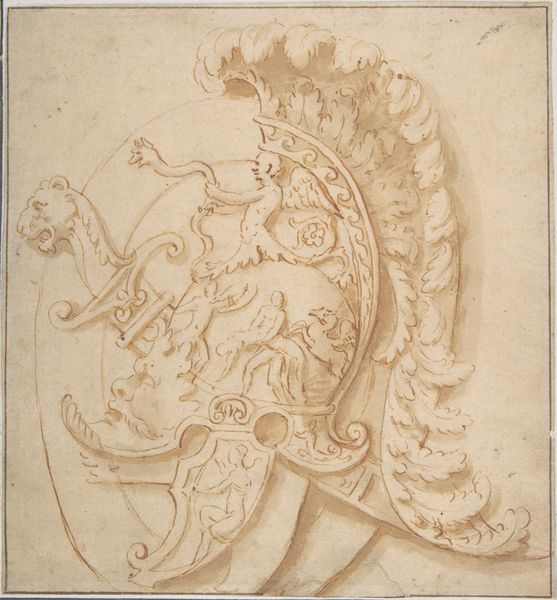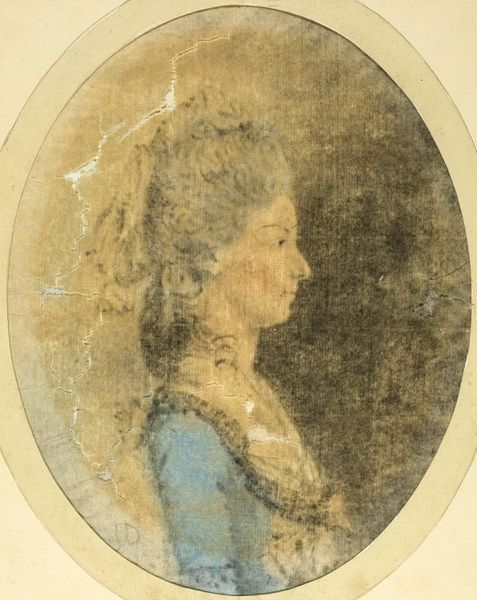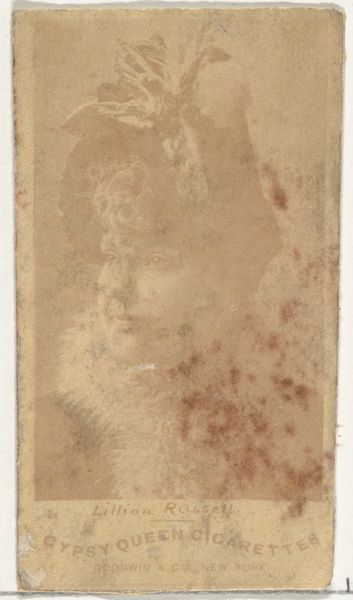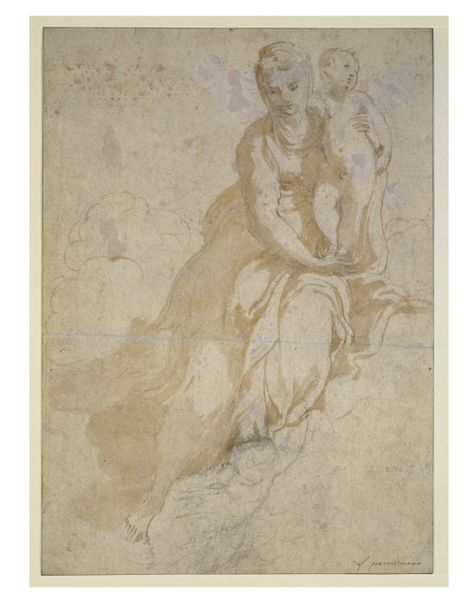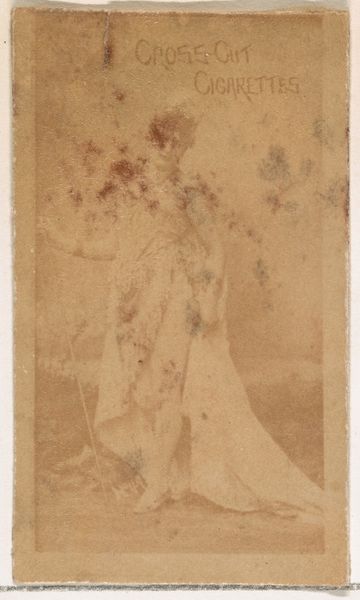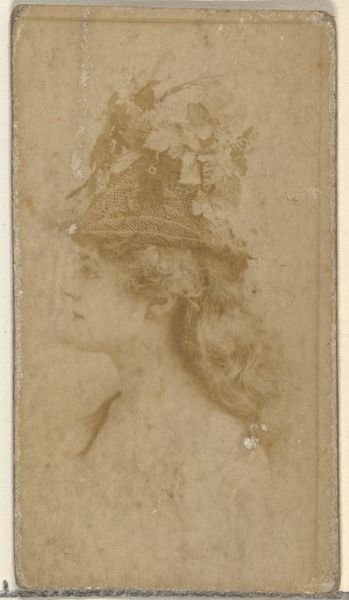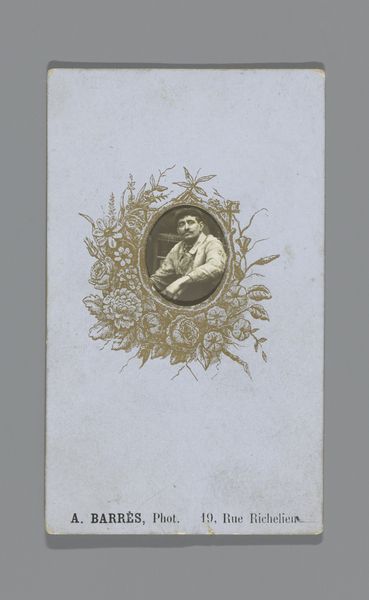
drawing, paper, pencil
#
portrait
#
drawing
#
neoclassicism
#
paper
#
coloured pencil
#
pencil
#
line
Dimensions: height 81 mm, width 68 mm
Copyright: Rijks Museum: Open Domain
Editor: So, here we have "Portrait of a Woman" by Gilles Louis Chrétien, created sometime between 1764 and 1811. It’s a pencil drawing on paper and its simplicity makes me focus on her expression...What catches your eye about this portrait? Curator: For me, it's the blend of delicacy and precision. The line work, typical of Neoclassicism, gives a sense of order, almost a mathematical beauty. But then you have the softer touches in her hair, that little wisp escaping… It makes me wonder, doesn't it, about the controlled versus the uncontrolled aspects of a person, especially in that era. How they tried to contain the 'self'. Does it resonate with you? Editor: Absolutely! It's like she's resisting the constraints. What about the circle framing her? Does it have a particular significance? Curator: Ooh, good question! Circles often symbolize eternity or wholeness. In portraits, they can suggest idealization. But here, I see something else—a kind of… containment. As if she's displayed, almost scientifically. Editor: That’s a bit unsettling…So much for eternity, huh? Curator: Indeed. It transforms the sitter into an object of study, not reverence. Chrétien almost seems to be asking: "Can we truly know someone simply by their appearance?" It is also perhaps something about what portraiture means. The circle creates, I suppose, both art and artifact in one. Editor: Wow, I didn’t think about it that way! Now, seeing the subtle details and thinking about the historical context… It’s shifted my perspective completely! Curator: Precisely! That's the delightful power of art—changing how we see, feel, and understand the world, and especially each other, across time.
Comments
No comments
Be the first to comment and join the conversation on the ultimate creative platform.
